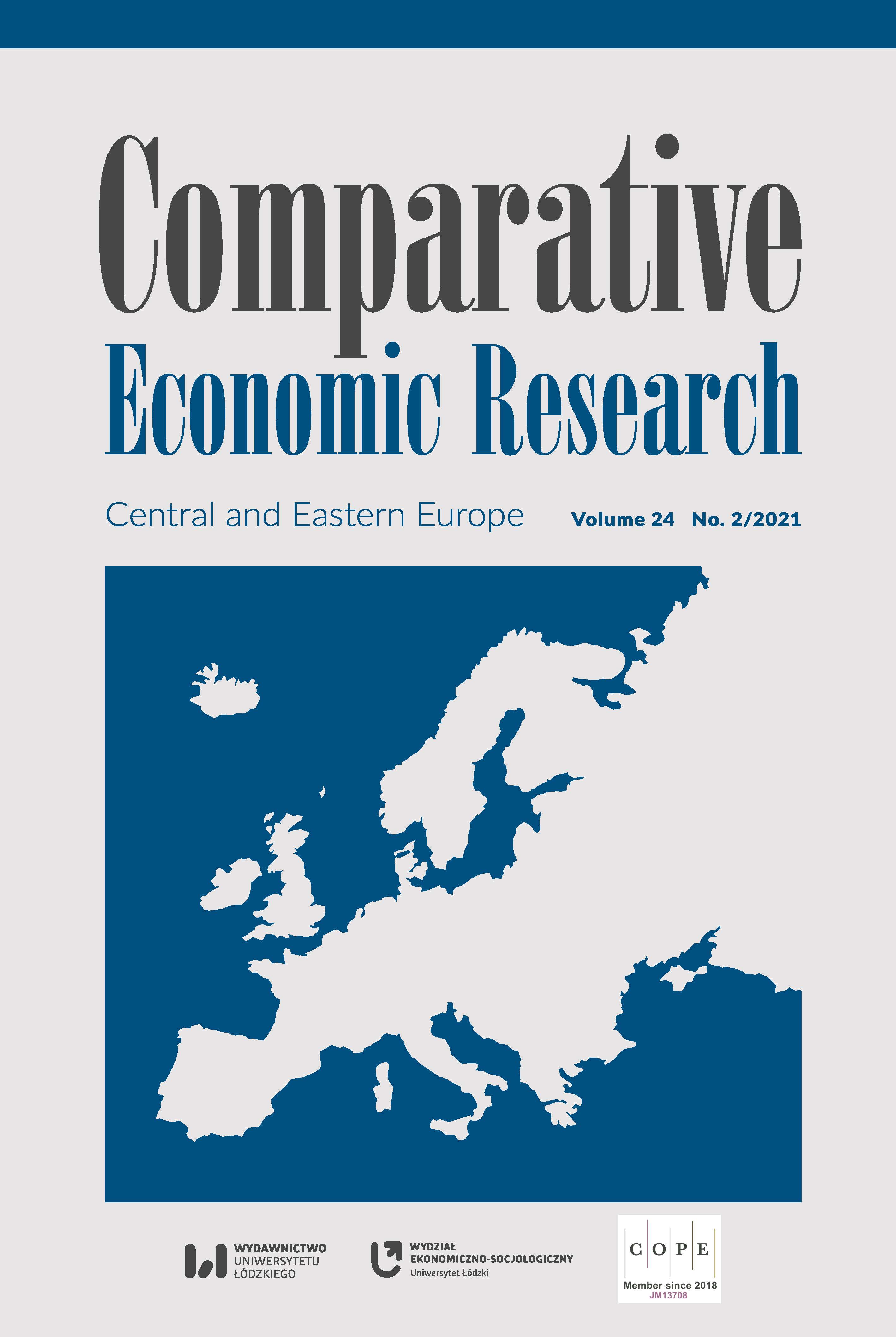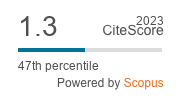A Comparative Analysis of the Trade and Industrial Policies of Ukraine and China in the Context of the Obor Initiative
DOI:
https://doi.org/10.18778/1508-2008.24.15Keywords:
One Belt One Road initiative, China, Ukraine, trade policy, FTA, industrial policyAbstract
The world economy is evolving towards multipolar globalization, and China has become a new pole of economic development. Ukraine, like other countries, is looking for ways to cooperate with China in the field of trade and investment. China, for its part, offers a model of cooperation within the framework of the OBOR (One Belt, One Road) initiative. Along with Chinese investment in transport and logistics infrastructure, OBOR aims to conclude FTAs with the countries participating in the initiative; thus, the article focuses on the issues of trade, and Ukraine’s industrial and innovation policy in the context of the OBOR initiative. A comparative analysis of both countries’ trade and industrial policies was conducted to provide a basis for evaluation. The terms of trade between Ukraine and China are not symmetrical due to the difference in the scale of the economy and trade. Additionally, Ukraine’s trade regime is relatively liberal, while the Chinese market is protected by higher tariff and non‑tariff barriers. Furthermore, the current situation in mutual trade is asymmetric. Ukraine exports mainly raw materials to China, while exports from China to Ukraine are dominated by investment and consumer goods.
The import dependence of the Ukrainian economy, in general, is high without any noticeable signs of decline. In 2014–2018, the share of imports of goods and services in GDP in Ukraine averaged 54% (for comparison, in China, this parameter was 19%). In 2018, 55% of Ukraine’s negative balance in trade in goods was due to trade with China. China seeks to conclude FTAs under the OBOR initiative, but in the current context, the liberalization of trade regimes with China will result in Ukraine growing its raw material exports to China and increasing its dependence on Chinese imports. On the other hand, China’s investment, production, research, and technological opportunities can become an important resource for Ukraine to modernize its economy. Promising areas of Chinese investment include high technology, in particular, aviation, shipbuilding, bioengineering, the development of new materials, and more. Ukraine is interested in China’s experience in implementing a number of state programs in the field of innovation development of Chinese industrial enterprises. The support system for clusters, industrial parks, Free Economic Zones (FEZs), and technology parks can be recommended for introduction into Ukrainian legislation in the sphere of developing an innovation structure in Ukraine.
Downloads
References
AEGIS EUROPE (2016), 10 Commitments China made when it joined the WTO and has not respected, http://static1.squarespace.com/static/5537b2fbe4b0e49a1e30c01c/t/568f7bc51c1210296715af19/1452243910341/The+10+WTO+Committments+of+China.pdf (accessed: 28.02.2020).
Google Scholar
Bieliński, T., Markiewicz, M., Oziewicz, E. (2019), Do Central and Eastern Europe Countries Play a Role in the Belt and Road Initiative? The Case of Chinese OFDI into the CEE–16 Countries, “Comparative Economic Research. Central and Eastern Europe”, 22 (2), pp. 7–22, https://doi.org/10.2478/cer-2019-0009
Google Scholar
DOI: https://doi.org/10.2478/cer-2019-0009
Boguslaev confirmed the sale of the Chinese company “Motor Sich” (2019) (in Russian), https://www.epravda.com.ua/rus/news/2019/12/13/654876/ (accessed: 5.02.2020).
Google Scholar
Boiko, O.M. (2017), Structural components of the innovation environment of the national economy: Ukraine and other countries of the world, Materials of reports of the international scientific‑practical conference “Socio‑economic development of organizations and regions of Belarus: efficiency and innovation”, dedicated to the year of science, EE “VSTU”, Vitebsk.
Google Scholar
China and Motor Sich are building a plant (2017) (in Russian), https://www.ukrinform.ua/rubric-other_news/2242211-kitaj-i-motor-sic-buduut-zavod.html (accessed: 5.02.2020).
Google Scholar
China seeks leadership in the space industry (2018) (in Russian), https://blog.allo.ua/kitaj-stremitsya-k-liderstvu-v-kosmicheskoj-otrasli_2018-01-36/ (accessed: 5.02.2020).
Google Scholar
Choroś‑Mrozowska, D. (2019), The Chinese Belt and Road Initiative from the Polish Perspective, “Comparative Economic Research. Central and Eastern Europe”, 22 (2), pp. 39–53, https://doi.org/10.2478/cer-2019-0011
Google Scholar
DOI: https://doi.org/10.2478/cer-2019-0011
Egorov, I.Y., Boiko, O.M., Griga, V.Y. (2015), Industrial parks in Ukraine: problems of formation and prospects of development, National Academy of Sciences of Ukraine, Institute of Economics and Forecasting of the National Academy of Sciences of Ukraine, Ministry of Economic Development and Trade of Ukraine, Research Economic Institute, Kyiv.
Google Scholar
Ezell, S.J., Atkinson, R.D. (2015), False Promises: The Yawning Gap Between China’s WTO Commitments and Practices, The Information Technology & Innovation Foundation, September 2015, http://www2.itif.org/2015-false-promises-china.pdf?_ga=2.196300396.1589681642.1551882052-593599331.1551882052 (accessed: 28.02.2020).
Google Scholar
Global innovation index 2019, Creating Healthy Lives, The Future of Medical Innovation (in Russian), https://www.wipo.int/publications/ru/details.jsp?id=4434 (accessed: 5.02.2020).
Google Scholar
Huawei, https://en.wikipedia.org/wiki/Huawei (accessed: 6.04.2020).
Google Scholar
Industry of China (in Russian), https://ru.wikipedia.org/wiki/%D0%9F%D1%80%D0%BE%D0%BC%D1%8B%D1%88%D0%BB%D0%B5%D0%BD%D0%BD%D0%BE%D1%81%D1%82%D1%8C_%D0%9A%D0%9D%D0%A0 (accessed: 2.02.2021).
Google Scholar
ITC, TOP 10 manufacturers of solar modules in 2019, (in Russian), https://itc.ua/news/desyatka-krupnejshih-proizvoditelej-solnechnyh-modulej-v-2019-godu/ (accessed: 5.02.2020).
Google Scholar
Lavnykevych, D. (2018), Be Afraid of Chinese Who Bring Gifts, “Zerkalo Nedeli”, 36 (in Russian), https://zn.ua/finances/boysya-kitaycev-dary-prinosyaschih-293207_.html (accessed: 5.02.2020).
Google Scholar
Lingling, H. (2013), On re‑invigorating the Australia‑China Free Trade Agreement negotiation process, “Journal of World Investment and Trade”, 14 (4), pp. 672–696, https://doi.org/10.1163/22119000-01404004
Google Scholar
DOI: https://doi.org/10.1163/22119000-01404004
Made in China 2025 (2015), https://www.csis.org/analysis/made-china-2025 (accessed: 6.04.2020).
Google Scholar
MOFCOM (2004), Foreign Trade Law of The People’s Republic of China, http://english.mofcom.gov.cn/aarticle/policyrelease/internationalpolicy/200705/20070504715845.html (accessed: 28.02.2020).
Google Scholar
MOFCOM (2008), Free Trade Agreement between the Government of the People’s Republic of China and the Government of New Zealand, http://images.mofcom.gov.cn/gjs/accessory/200804/1208158780064.pdf (accessed: 28.02.2020).
Google Scholar
MOFCOM (2015), Free Trade Agreement between the Government of Australia and the Government of the People’s Republic of China, http://fta.mofcom.gov.cn/Australia/annex/xdzw_en.pdf (accessed: 28.02.2020).
Google Scholar
Opening ceremony of the Chinese part of the Ukrainian‑Chinese Technopark in Shanghai (2011) (in Russian), https://china.mfa.gov.ua/news/2660-vidbulasy-urochista-ceremonija-vidkrittya-kitajsykoji-chastini-ukrajinsyko-kitajsykogo-tehnoparku-v-shankhaji (accessed: 2.02.2021).
Google Scholar
Ostashko, T., Olefir, V. (2019), Prospects of free trade with China: development of domestic export and risks of import dependence, “Economy and Forecasting”, 1, pp. 124–152, https://doi.org/10.15407/econforecast2019.01.124
Google Scholar
DOI: https://doi.org/10.15407/econforecast2019.01.124
Studwell, D. (2017), Why Asia Succeeded. Successes and failures of the most dynamic region of the world, Nash Format, Kyiv.
Google Scholar
The Global Competitiveness Report 2019, http://www3.weforum.org/docs/WEF_TheGlobalCompetitivenessReport2019.pdf (accessed: 5.02.2020).
Google Scholar
UN Comtrade Data Base, https://comtrade.un.org/ (accessed: 5.02.2020).
Google Scholar
World Integrated Trade Solution, https://wits.worldbank.org/Default.aspx?lang=en (accessed: 5.02.2020).
Google Scholar
WTO (2001a), Protocol on the Accession of the People’s Republic of China, The Ministerial Conference Decision of 10 Nov. 2001, https://www.wto.org/english/thewto_e/acc_e/completeacc_e.htm#chn (accessed: 28.02.2020).
Google Scholar
WTO (2001b), Report of the Working Party on the Accession of China, https://www.wto.org/english/thewto_e/acc_e/completeacc_e.htm#chn (accessed: 28.02.2020).
Google Scholar
WTO (2018a), China donates USD 1 million to support implementation of Trade Facilitation Agreement, “WTO News 2018”, 2 Feb. 2018, https://www.wto.org/english/news_e/pres18_e/pr816_e.htm (accessed: 28.02.2020).
Google Scholar
WTO (2018b), China. Trade Policy Review, Revision, 14 Sep.2018,WT/TPR/G/375, Trade Policy Review Body, https://www.wto.org/english/tratop_e/tpr_e/tp_rep_e.htm#bycountry (accessed: 28.02.2020).
Google Scholar
WTO (2018c), China. Trade Policy Review, 6 June 2018, Trade Policy Review Body, Report by China, https://www.wto.org/english/tratop_e/tpr_e/g375_e.pdf (accessed: 28.02.2020).
Google Scholar
Downloads
Published
How to Cite
Issue
Section
License

This work is licensed under a Creative Commons Attribution-NonCommercial-NoDerivatives 4.0 International License.











